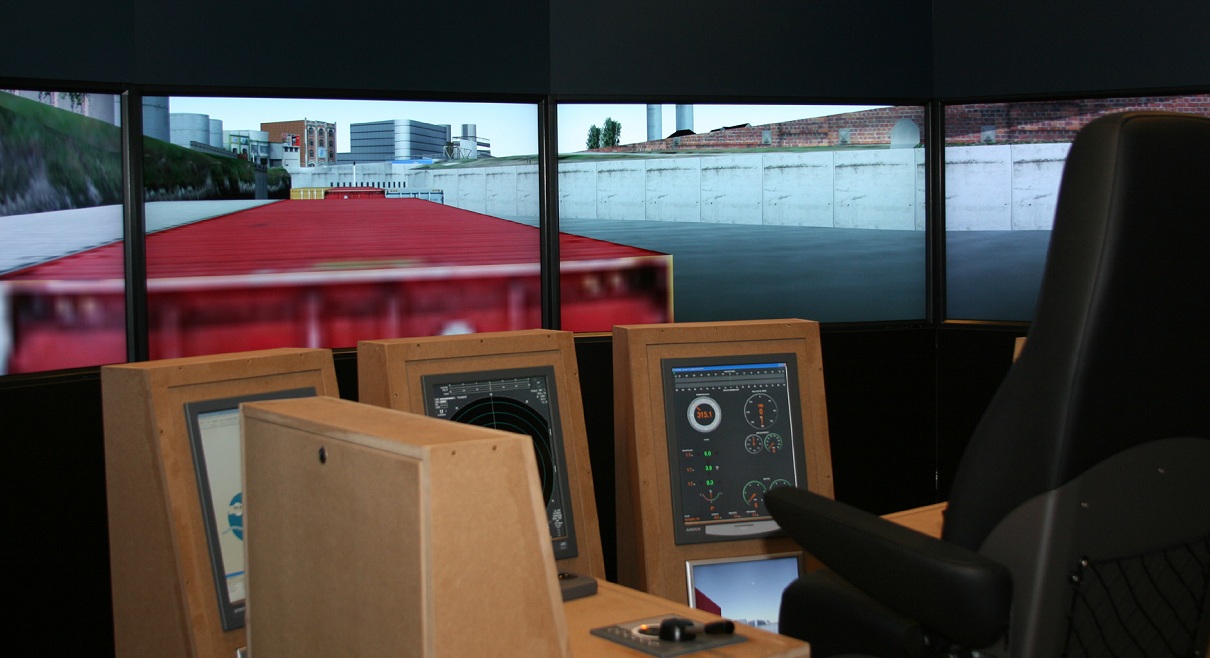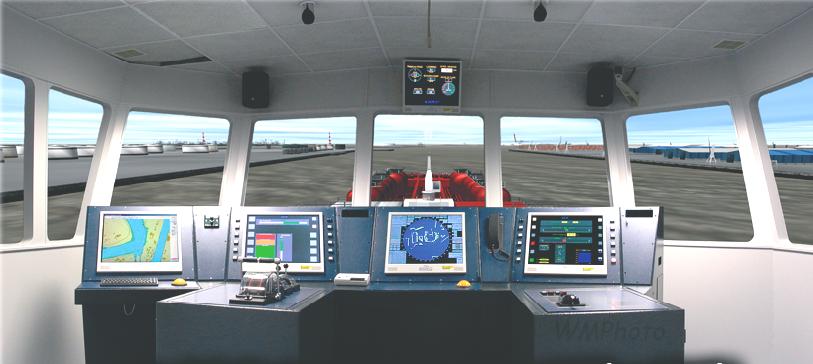Ship Manoeuvring Simulators
The ship manoeuvring simulator comprises various components. There is firstly the mathematical model. This is the calculating core behind vessel motions. Different forces act upon a sailing vessel: forces generated by the movement of the vessel through the displaced water, by wind, current, waves and other passing vessels.
Secondly, the simulator has a navigation bridge. From the instruments, the radar and the exterior view through the windows of the simulated bridge, the captain or pilot can see how the vessel behaves. With adaptive commands (rudder(s), telegraph, tugboat assistance) he/ she steers the vessel. Dependent on these commands, the interaction of forces on the vessel can be calculated. From this, the speed and the new position of the vessel is calculated and displayed on instruments and radar. In this manner, manoeuvring is simulated as realistically as possible.
Flanders Hydraulics Research has three complete bridge simulators:
- Bridge with 210° aerial view displayed on seven 52" LCD monitors
- Equipped with ECDIS and radar
- Controllable camera views
- Controllable bridge height as on many inland vessels
- View vertical down (Manoeuvres close to a wall or lock)
- Command section as conventional vessel or Voith (tug boats)
LARA: Inland navigation simulator (3 December 2010):

- Bridge with 225° aerial view
- Augmented rear view provided by four 85" screens
- PPU (Portable Pilot Unit) with integrated QASTOR application
- Command section as conventional vessel or Voith (tug boats)
Simulator SIM 225 (since 1997):

- Bridge with 360° aerial view
- PPU (Portable Pilot Unit) with integrated QASTOR application
- View vertical down (Manoeuvres close to a wall or lock)
- Command section as conventional vessel or Voith (tug boats)
Simulator SIM 360+ (since 2004):

Read more...




